Welcome to Moda Fabrics!
Tip Jar: It's about what's in the middle...
Tip Jar: It's about what's in the middle...
It's not a quilt until it's quilted.
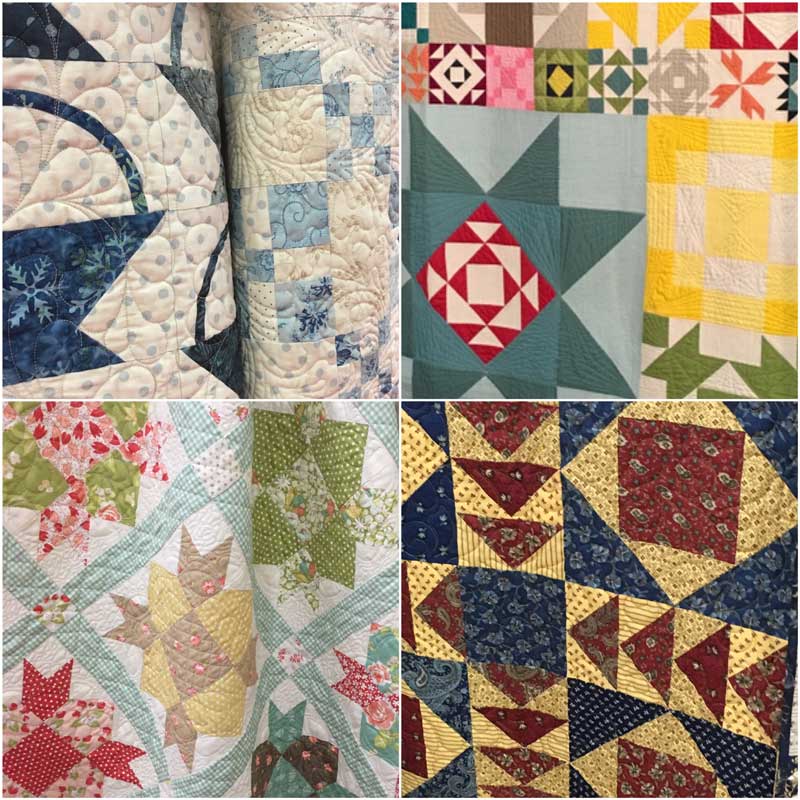
There are three layers to a quilt - the top, the backing and the batting. Or wadding to the Aussies and the folks across the pond.
It can be made of cotton, polyester, wool, alpaca, silk, bamboo, soy, corn, hemp and even recycled plastic bottles. And there are blends - the most common is cotton and polyester, but there are also blends made with cotton and bamboo, silk and polyester, and cotton and wool.
Then there are lofts... I know. There is so much to know. To think about.
You should know that I will try just about any batting at least once because I'm curious. And I might like it - and I won't know if I do if I don't try it. I also love that there is so much variety now - so many more options for how quilts look, feel and "wear".
When I started quilting back in ****, there were only a handful of options: the polyester batting that they surely used for big poufy comforters; the very thin, needed to be hand-quilted cotton batting from Mountain Mist; and something "new at the time" called Cotton Classic - an 80% cotton/20% polyester batting.
The advantage of trying so many new battings is that I learned what I liked, and what I didn't. I learned that I liked newly-washed quilts to have a soft, squishy, slightly puckered kind of look that came from the batting shrinking more than the fabric. I liked quilts that felt like quilts - I didn't want to be able to stand it in the corner.
For every batting choice, there is an opinion about which one works best for <fill in the blank>. I think the only thing that really matters is which one works best for you based on what you like - the kind of quilts you make. And how you quilt them - a lot or a little... by hand or by machine. And wash them... and display them.
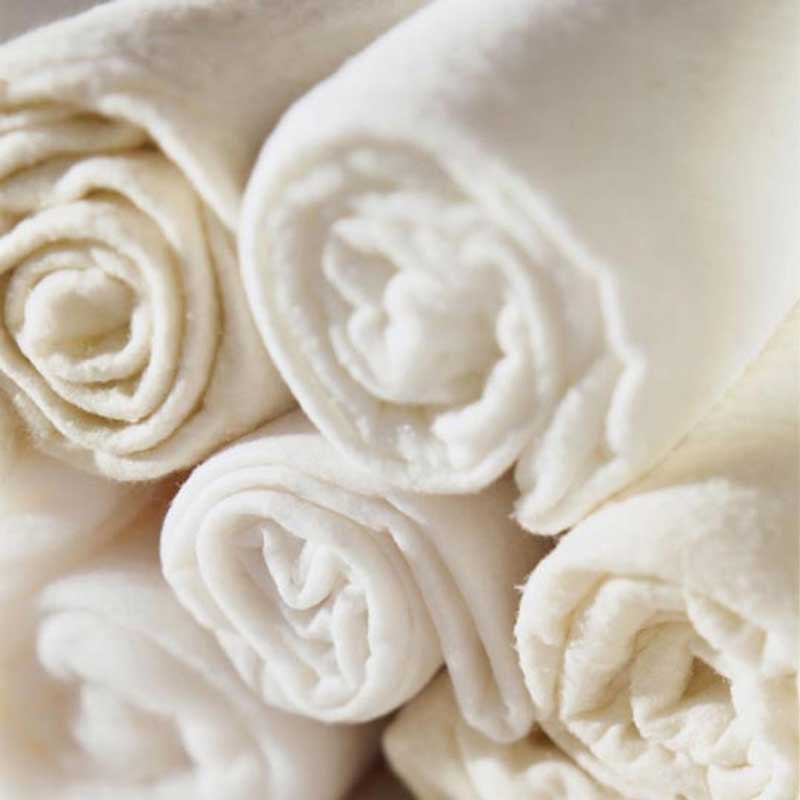
First, some terminology that might help.
Thick or Thin - Loft. While there are exceptions, cotton battings are low-loft and polyester battings are high-loft. Or higher-loft.
Low-loft battings are softer and are generally better for hand-quilting. Low-loft battings can be used in a double-layer to highlight quilting. Medium- and high-loft battings add more depth to the quilting, highlighting designs and showcasing stitching. It can be used to create trapunto-like effects.
Drape. A stiff batting does not have "good drape". Does it "drape" nicely around your body and shoulders after it has been quilted? If yes - it has "good drape". If no - it does not have "good drape".
Caveat - a batting can have good drape but lose the drape if it's over-quilted.
Shrinkage. Do you want the quilt to stay the same size as it was when it was finished? Do you want a puckered, vintage look?
A cotton batting will shrink, as will a cotton-blend batting. Wool batting can shrink, depending on how it is washed. If you want your quilt to shrink for a vintage-look and you need the final quilt to be a certain size, then factor in about 5% shrinkage. E.g., If the quilt needs to be at least 72" after washing, plan on making it at least 76" big before washing if it's going to have a cotton batting.
Pre-soaking. While it isn't necessary to pre-wash or pre-soak a batting, the advantage of doing so is to eliminate - or minimize - shrinkage, especially in batting made with natural fibers. Doing so will minimize the lovely puckering that makes a quilt look antique - which means that if your goal is a smooth, finished modern or contemporary quilt, it's probably a good idea to pre-wash or pre-soak.
Rating. How far apart do the quilting lines need to be for the batting not to "shift" or migrate? If you don't want to do a lot of quilting, you'll want a batting that has a higher rating due to a scrim and needle-punching.
Bearding. When the fibers in the batting start working their way through the fabric. It's an important reason for reading the washing instructions on the package or roll of batting.
Scrim. A thin polyester "sheet" that stabilizes the batting and prevents distortion and stretching. The batting fibers are needle-punched into the scrim to add strength and loft.
Needle-punched. The fibers in the batting are punched together - compressed - with thousands of tiny needles. The batting is generally stronger and more stable, but it is also lower loft and a bit stiffer, making it less suitable for hand-quilting. While some needle-punched battings have a scrim, not all do.
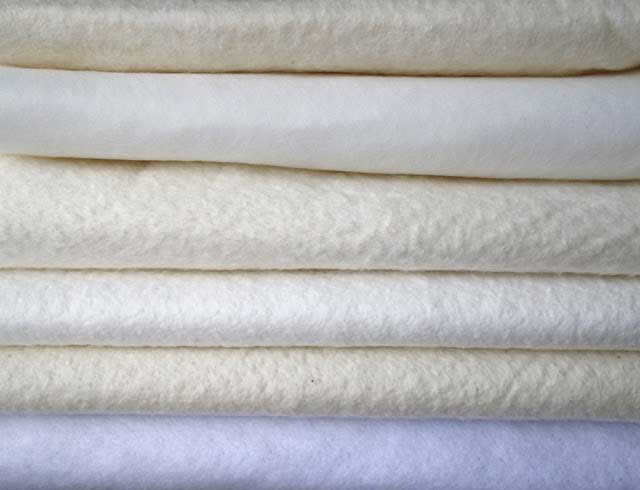
Bonded. The fibers that make the batting are bonded together by thermal or resin bonding. For "resin bonding", a resin is applied to both sides of the batting then allowed to cure and dry. Resin battings are the least likely to beard. Resin-bonded battings can be cotton, wool and/or polyester. Thermal bonding has fibers blended with standard polyester that are then melted together at low heat to hold them together. A thermal bonded batting isn't as resistant to bearding as a resin-bonded batting, but it withstands washing better than a resin-bonded batting.
White, Natural & Black. The primary color of your quilt will have some bearing on the color batting you choose. If your quilt is predominantly white - or has a lot of white space - then a white, bleached batting should be used. While dark quilts do not need a black batting, some quilters prefer it for quilts with a lot of solid black fabric. Bearding - it doesn't happen often, but when it does...
If the quilt isn't predominantly white, the question of whether to use a white or natural-colored batting is a matter of personal preference. A good test is to put a piece of background fabric or a pieced block in a well-lit area. Put a piece of natural-colored paper behind it, then a piece of white paper. If there is a difference in the appearance of the fabric, choose the one you prefer.
Why paper? For whatever reason, it always seems easier, faster and a better gauge for me.
Purpose. Finally, how are you going to use your quilt? Placemats, table-runners and wall-hangings are best done with low-loft battings. Those made with a scrim or needle-punching will be flatter, meaning that the finished piece is more flat - even after washing.
Density or shadowing. If your quilt will be hanging on a wall, the color of the wall or the print used for the backing could show through the front of a light-colored quilt. Using a thicker, needle-punched batting will help reduce the possibility of that happening.
Storage. Will your quilts be folded and stored in a cabinet? If so, then using a batting that doesn't have a scrim is recommended. The scrim is essentially "plastic" and once it gets a hard-fold, it can be difficult to remove or "release" the crease.
Natural or Synthetic. In very simple terms, this is what is important to know about each type.
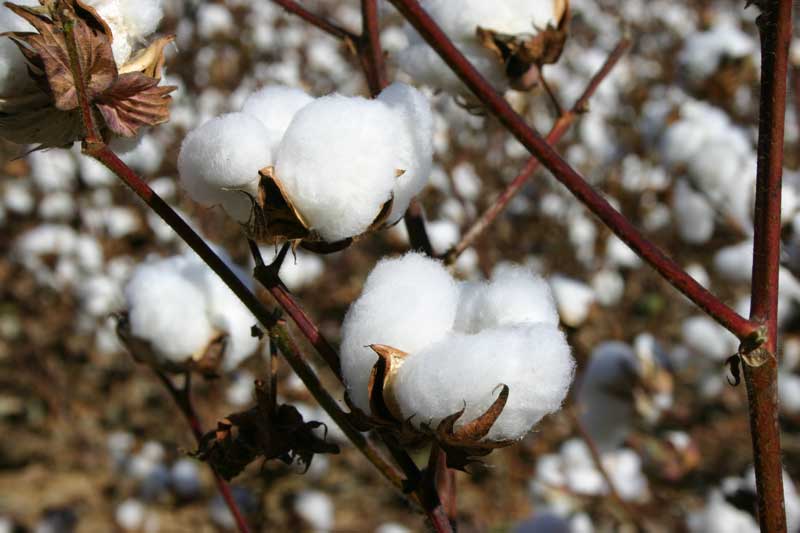
Cotton. Cotton is a natural fiber available in a variety of lofts - mostly low- and medium. If you want a vintage-looking quilt, you'll probably use a cotton batting. They're softer, wash beautifully and wear well, and they shrink and wrinkle nicely - for that antique look.
Cotton batting is generally the most popular - the purists who want "all cotton". (I'm in that group so I can tease about it.)
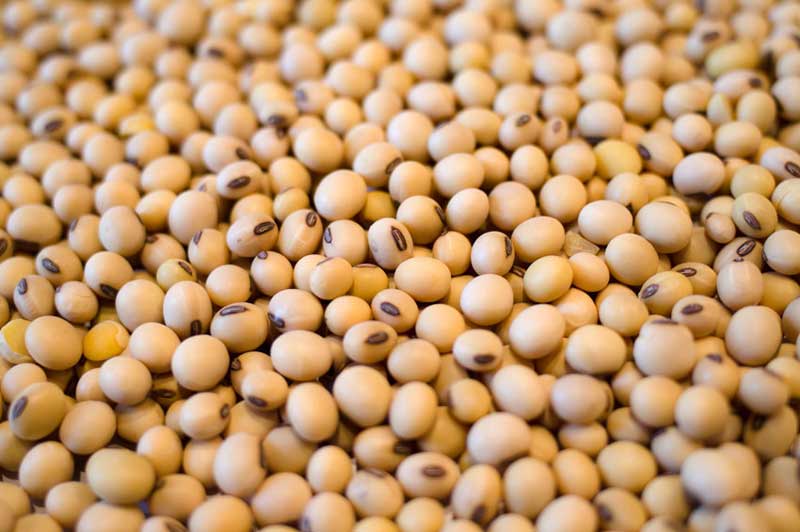
Soy. Relatively new on the market - within the last ten years - battings made with soy fibers are very soft, lightweight, naturally anti-bacterial and resistant to bearding. Some soy batting can have the look and feel of silk batting - they're low-loft and have a beautiful drape. They're especially nice for quilted garments and quilts made with lawn or voile.
Silk. What? You wanted a picture of a silkworm?
A silk batting is lightweight, has a beautiful "drape" for garments and quilts. It is suitable for hand- and machine-quilting. It does not shrink unless the fiber in the blend is cotton - and yes, most silk battings are a blend. The primary drawback to silk batting is that it is expensive. But for the right project, it's worth it.

Bamboo. As it is with soy batting, bamboo and bamboo-blend battings are becoming more easily available. Most bamboo battings I've seen are a 50-50 blend with organic cotton. They're soft, have good drape and work for both hand- and machine-quilting.
I've used the Kyoto bamboo-cotton blend batting for several years and it's a favorite. I love the look, feel and weight of it - it drapes beautifully, shows the quilting, and always gets that vintage-look with washing. It's naturally anti-bacterial - and it's environmentally friendly as an easily-renewable plant.

Wool. I love wool batting - 100% wool and wool-cotton blends. (Though the later can be hard to find.) It's lightweight, very soft and it has "good drape". Because it is a natural fiber, it does "breathe" - a quilt with wool batting can be just as comfortable in warm weather as a cotton quilt.
Some wool batting is washable - but not all. Wool batting can shrink - a lot. (Ask me how I know.)
True story - the first time I used wool batting, I washed it as I would a quilt made with cotton batting. I'd seen "machine washable" on the packaging and since I had experience with felting wool, I figured I knew what I was doing. It washed up beautifully. It shrank quite a bit - maybe 8% - but it did "relax-down" a bit. I loved the results. A few weeks later, while telling someone about this amazing batting, I saw that - oops - I shouldn't have washed it the way I had. So the next time I used it, I followed the instructions. I liked the results but... a week later, I washed it again. My way. While I don't recommend your doing that - if you have any doubts, do a test piece.
Wool is also an excellent choice for quilts that will be stacked in a cabinet - the fiber is naturally resistant to forming hard creases or folds.
And finally...
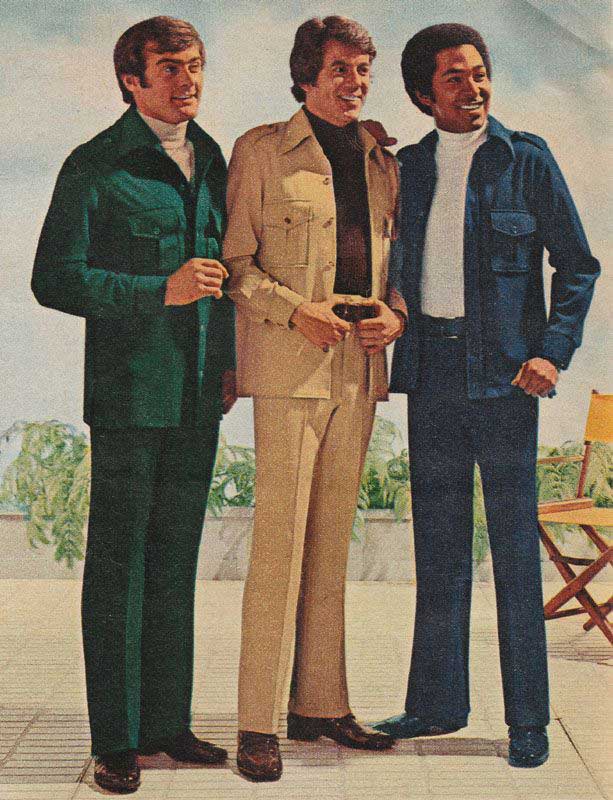
Polyester. Polyester has come a very long way since the 1970s. Because it can have the most loft - and because it retains that loft - it makes the quilting stand out beautifully. It usually has a very good drape, and it can also be the coziest of quilts because it doesn't breathe as well as cotton or wool. Because it is generally the least expensive batting option, it is a great choice for baby quilts and quilts that aren't destined to be family heirlooms.
Whew. Batting. Who knew there was so much to consider?
Just so you know, I didn't know all of this off the top of my head. I do try almost every batting I come across but I did have a few questions so I did a little research. In doing so, I found a couple of Quick Reference Charts that you might find useful. They're from our friends at American Patchwork & Quilting.
The best resources are other quilters - ask your friends and fellow guild-members what they use. Ask your machine-quilter for their preferences - and your local quilt shop.
Happy Tuesday!

Comments